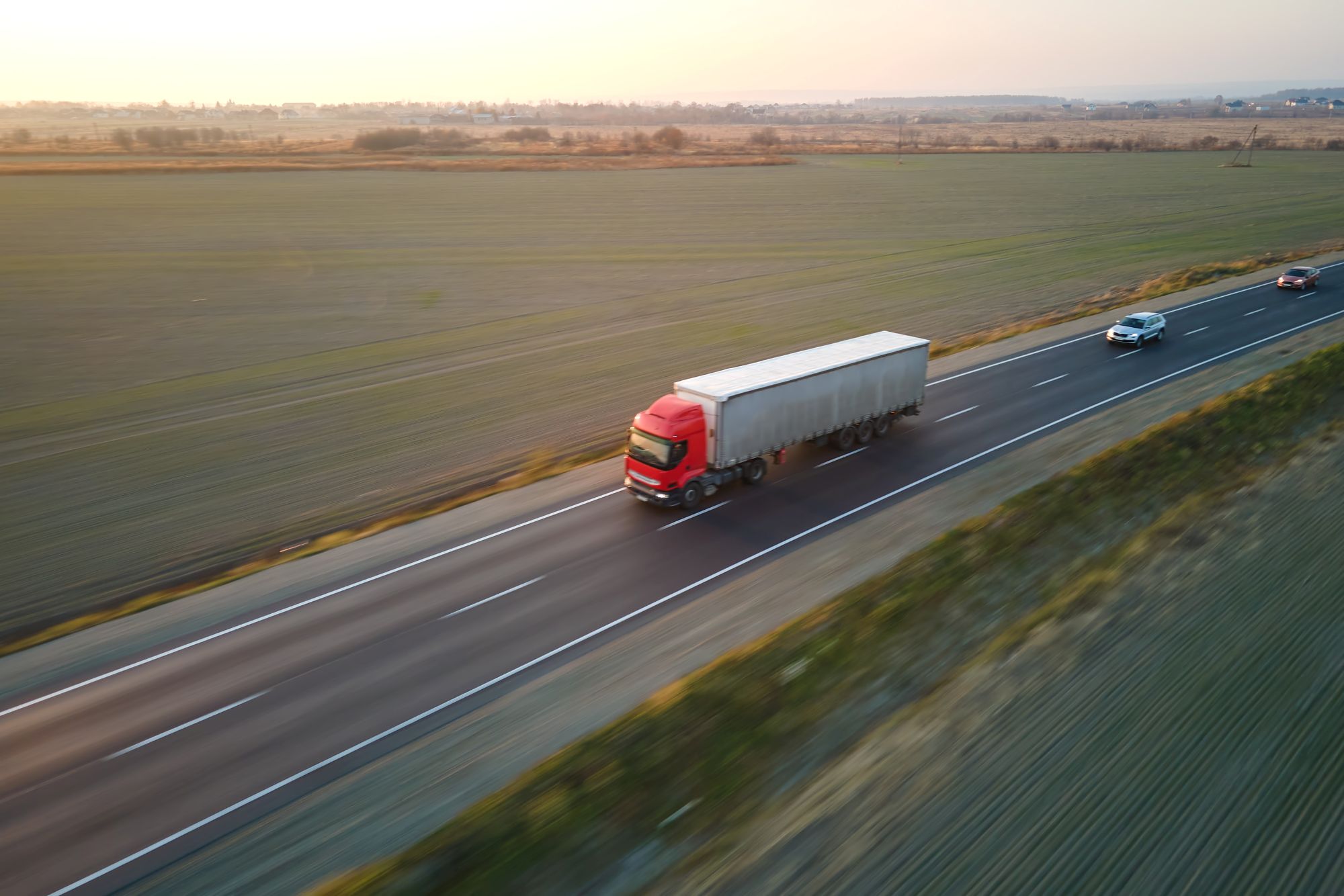
Miranda Blake
Ziua șoferilor HGV 2025: Să le dăm drumarilor o voce
Creat: 22.01.2025
•
Actualizat: 22.01.2025
Pe 22 ianuarie 2025, este Ziua șoferilor de vehicule grele. Instituită de NN1 Personnel (recrutori și furnizori de camioane în industria logistică), această zi își propune să sărbătorească șoferii și tot ceea ce fac ei pentru economie și societate.
Fără camionagii, care se confruntă adesea cu diverse dificultăți în acest rol (inclusiv îndepărtarea de familie și de casă, ore lungi de lucru și călătorii în condiții meteorologice extreme), am fi lipsiți de produsele noastre necesare și de confort. Aceștia au fost cu adevărat eroi în ultimii câțiva ani, precum și înainte - pandemia a fost doar un exemplu în acest sens.
Modul în care marcați această zi depinde de dumneavoastră. NN1 Personalul recomandă acte de bunătate, de exemplu oferindu-le șoferilor o băutură caldă sau discutând cu ei.
Aici, la SNAP, suntem întotdeauna dornici să le dăm drumarilor o voce. Așadar, pentru această Zi a șoferilor de vehicule grele, exact asta facem. Ca urmare a unei postări recente pe pagina noastră de Facebook în care se întreba despre deficitul de șoferi și cum să ne asigurăm că tinerii au entuziasmul de a se alătura industriei, vom evidenția câteva dintre comentariile drumarilor care arată experiențele lor reale - de la provocările cu care se confruntă la ceea ce iubesc la locul lor de muncă.
Echilibru între viața profesională și cea privată
Un punct cheie de discuție pentru șoferi este modul în care rolul lor le afectează viața personală, cum ar fi faptul că nu pot fi prezenți în momentele importante din viață, că trebuie să doarmă în cabina lor și că banii nu merită sacrificiile pe care le fac.
"Conducerea de camioane a fost întotdeauna prost plătită, cu ore lungi și cu o viață socială redusă sau inexistentă. Tinerii din ziua de azi nu vor mai suporta orele prostești, deoarece majoritatea au o viață în afara muncii."
"Nu aș recomanda-o decât dacă o ai în sânge. Nu este ca o slujbă obișnuită; este un mod de viață. Trebuie să înțelegi în ce te bagi. Nu ai ore regulate de începere și de terminare, ca într-o fabrică. Totul este legat de natura muncii. Te aștepți să faci schimburi de 15 ore și nopți petrecute în cabină, în funcție de cerințele postului - și să-ți distrugi viața de familie."
"70 de ore pe săptămână în medie pentru 50.000 de lire sterline pe an nu mai merită. Salariul minim se apropie rapid de salariul mediu al șoferului de camion, așa că voi face ore suplimentare la o fabrică pentru aceeași sumă de bani și îmi voi vedea soția în fiecare seară."
"Trebuie să lucrezi 60/65 de ore pe săptămână, 3/4 ieșiri în oraș, nicio viață socială - pentru banii pe care îi câștigi, ai putea la fel de bine să stivuiești rafturi la Aldi și să ai o viață. Șoferii noi care încep să conducă nu vor să lucreze atâtea ore sau să petreacă atâtea nopți în oraș pentru salariul de mizerie pe care îl câștigi, de fapt. Prin urmare, atunci când companiile vor începe să plătească mai mult șoferii, vor începe să aibă șoferi."
"Câți dintre cei care au început în același timp cu mine au continuat cu industria? Câte soții s-au săturat să nu-și vadă soții? Câți șoferi s-au săturat să nu-și vadă soțiile și copiii?"
"De ce ar intra tinerii șoferi în această industrie? Ore lungi, salarii mici - pot câștiga mai mulți bani și pot avea o viață mai sociabilă dacă se pregătesc pentru altceva. Din păcate, acum este prea târziu pentru mine."
Statisticile susțin aceste afirmații. De exemplu, s-a constatat că șoferii de camioane lucrează în medie 48 de ore în fiecare săptămână - în comparație cu 37,5 ore pentru toți angajații, aceasta este o creștere substanțială de 28%. Prin urmare, nu este surprinzător doar o treime dintre șoferi au considerat că angajatorii lor sprijină echilibrul dintre viața profesională și cea personală. De asemenea, nu este șocant faptul că un număr atât de mare de șoferi au părăsit sectorul, inclusiv [67,21% dintre cei sub 30 de ani care și-au agățat casca de protecție în decurs de un an de la pandemie] (https://truckstuff.co.uk/blogs/news/does-the-uk-truck-driving-industry-have-an-employee-turnover-issue?srsltid=AfmBOoqunahghhFIsQ3zi8pbriG3HmNJZSmj9SG0dS9rahibXoF73L).
Viața după camionaj
Unii dintre cei care au comentat au părăsit industria și au ales alte roluri care îi fac mai fericiți.
"Să fiu plătit mai bine într-o fabrică de prelucrare a pieselor... și să știu când plec și când mă întorc acasă, așa că nu e nicio problemă."
"Permisul și CPC-ul meu stau pur și simplu în portofelul meu. Învățați oamenii să conducă mașini acum."
"Nu-mi lipsește deloc. Licența este încă valabilă. Am renunțat la CPC. M-am săturat de el."
"Am fost în clasa 1 ani de zile și nu m-aș mai întoarce la ea pentru că pot câștiga aceiași bani și pot avea o viață de familie într-o fabrică. Pur și simplu nu mai merită!"
"M-am întors să conduc autobuze pentru că se plătește mai bine pe oră acolo unde locuiesc. După 15 ani de condus vehicule grele, îmi plac la nebunie turele de opt ore. Nu-ți dai seama ce pierzi cu timpul de calitate petrecut departe de muncă până când nu experimentezi din nou."
Urmând pe urmele familiei
Alții, însă, au reflectat asupra amintirilor frumoase din copilărie, când călătoreau cu tații lor în camioane, precum și asupra valorii acestora și a modului în care această experiență i-a determinat să se alăture ei înșiși sectorului după terminarea studiilor.
"Cred că industria nu se gândește deloc la modul în care au fost crescuți tinerii de 21 de ani. Pe vremuri, ei mergeau cu tații lor în camioane. Băieții din camioane dezvoltau la fel de multe abilități cerebrale, dar se uitau la numerele de pe șosele."
"Când au oprit posibilitatea copiilor de a merge în căruță cu tații lor în timpul sărbătorilor, atunci tinerii au încetat să mai fie interesați. Să recunoaștem: nu există tocmai un stimulent financiar pentru a se înscrie, nu-i așa?"
"Nu am avut niciodată o singură vacanță școlară fără să merg cu tatăl meu în camion."
"Știau meseria pe dinafară înainte de a părăsi școala."
"A fost minunat să merg în Belgia cu tatăl meu. United Carriers pentru o agenție numită Protem Ltd din Kent. Apoi pe Marley Extrusions. Apoi, și încă și acum, sunt ajutor de șofer pentru că nu am permis - aș fi vrut să am, dar vederea mea nu este grozavă, așa că fac cel mai bun lucru ca ajutor de șofer. Îmi place să fiu în camioanele mele."
Pasiune pentru muncă
Într-o notă similară, mulți nu au fost de acord cu faptul că meseria de camionagiu nu este cea ideală - fie pentru bani, fie doar pentru dragostea lor de a conduce un camion.
"Fac trei nopți pe săptămână pentru un salariu de bază de 45.000 de lire sterline pe an. Arătați-mi un alt loc de muncă pe care l-aș putea obține cu două săptămâni de formare și care să plătească atât!"
"Sunt în joc pe cisterne de aproape 49 de ani și încă mai fac weekend-uri la 74 de ani cu o noapte pe săptămână, și vă pot asigura că există o lipsă de oameni buni în industrie. O mulțime de oameni buni au murit înainte de vreme. Cu siguranță aș face totul din nou dacă aș putea."
"Este o profesie care îți place sau nu. Mie mi-a plăcut să o fac timp de mulți ani și am fost plecat 4-6 săptămâni la un moment dat. Multe depind de compania la care te înscrii. Eu am fost la a mea timp de 32 de ani."
"Mi-am luat permisul de conducere la 19 ani. Acum fac tramping de aproape trei ani - ador asta."
"50% dintre șoferi nu doreau să fie plecați și nimeni nu dorea să fie plecat în weekenduri. Mai mult sau mai puțin toată lumea mi-a spus: "Ai pierdut cei mai frumoși ani, fiule, găsește-ți altă slujbă". Adevărul era că banii nu erau rău dacă munceai din greu, iar dacă erai acolo pentru bani puteai să trăiești bine. Dacă îți doreai o viață ușoară în cele mai bune camioane, odihnă din belșug și să fii îngrijit de firma ta, erai la locul de muncă greșit."
"Întotdeauna am lucrat peste 60 de ore în fiecare săptămână și am avut o viață confortabilă și, mai presus de toate, o femeie foarte bună, înțelegătoare și puternică alături de mine. Și da, aș face totul din nou."
Recunoașterea șoferilor de camioane în această Zi a șoferilor de vehicule grele
Toate aceste comentarii arată clar că, deși drumarii se confruntă cu siguranță cu provocări, există încă multe de iubit și pentru unii este o carieră pe care sunt fericiți să o facă toată viața - deci are sens ca aproximativ [jumătate dintre șoferi să se simtă mulțumiți de locul de muncă] (https://www.truckingdive.com/news/drive-my-way-2023-job-happiness-report/700293/).
Credem că este esențial ca toată lumea să recunoască tot ceea ce fac drumarii pentru noi. Din nefericire, unii șoferi au subliniat că nu sunt respectați deloc. Acest lucru nu ar trebui să se întâmple - ei ar trebui să fie recunoscuți pentru ceea ce fac pentru a ne oferi toate cele necesare în viață. Așa cum a spus un camionagiu:
"Autostrăzile ar putea fi venele țării - dar camioanele sunt sângele nostru. Fără ele, nu am avea produse alimentare, darămite mărfuri."
Prin urmare, de Ziua șoferilor de camioane - și în fiecare zi, de fapt - vă cerem tuturor să îi recunoașteți pe cei care sunt pe drum pentru noi. Drumarii merită laude, respect și multe altele.



